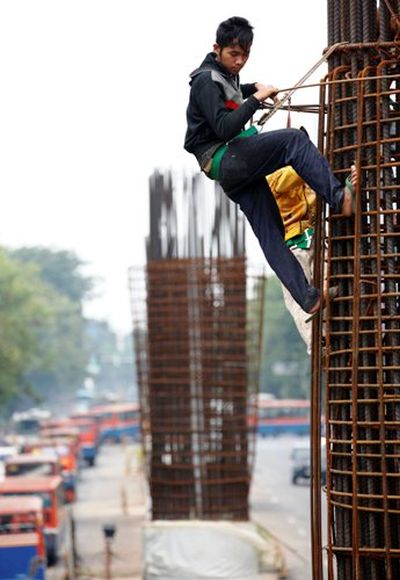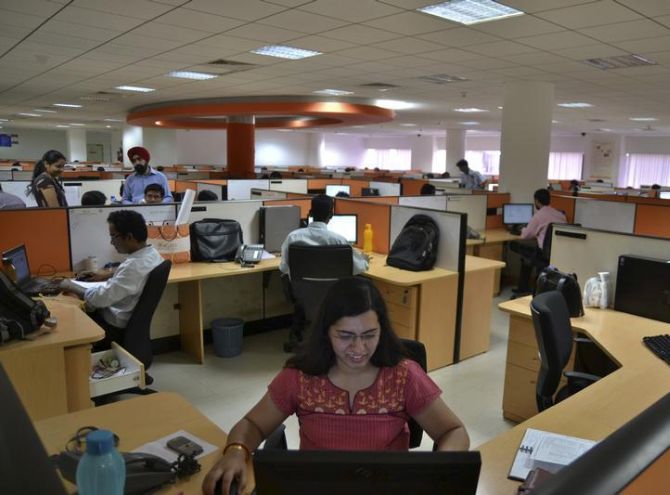
To reverse the economic slowdown, the new government needs to focus on agricultural, infrastructure, and creating jobs. Former RBI deputy governor Subir Gokarn outlines a plan for Modi sarkar.
The mandate received by the new government gives it an opportunity to set a long-term agenda without political threats.
This is exactly what any government would have required if it were to come to grips with the structural issues that now threaten the Indian economy's growth prospects.
Of all the many problems that can be put on a priority list, I believe that three are most critical.
No attempt to put the economy on a higher growth trajectory will succeed unless these three problems are solved.
Further, they are issues that cut across several jurisdictions, which means meaningful solutions will require intense co-ordination. They are best addressed through the mission mode.
…

The food mission
The most visible symptom of the problems in the food economy is the persistence of food inflation.
The objective of the mission must be to bring down the rate of food inflation quickly and sharply.
A number of factors have contributed to this unhappy situation, but at their core is the incentive framework within which farmers work.
This has its origins in the compulsions created by the cereal shortages of the 1960s.
The Green Revolution worked relatively well in dealing with the problem back then, but its legacy was to make the government the de facto consumer, thereby pushing households out of the picture.
The only way to deal with this is to bring the household back to centre stage, so that the farmer's cultivation decisions are based primarily on household food preferences.
…

This requires the government to step out the way by drastically reducing the role of procurement of unlimited quantities of cereals at guaranteed prices.
Direct exposure to market price variations across food items - and farmers' responses to them - is the only way to induce the supply responses that are critical to dealing with food inflation.
Of course, this does not mean that the government has no role to play. A safety net is still required; some form of income security for farmers needs to be provided. But it need not be done through procurement.
Also, the usual complaints about irrigation, power, storage and transport constraints need to be addressed if the supply chain is to become seamless.
The role of organised retail, including that of foreign direct investment, needs to be assessed in this context.
As regards domains, this mission would encompass agriculture, food, rural development, fertilisers, water and commerce, at a minimum.
As the strategy focuses on specific crops and geographies, the relevant state governments and their agencies will also become integral parts of the mission.
…

The infrastructure mission
It's time to face up to the limitations of the public-private partnership model.
Notwithstanding a few apparent successes, the infrastructure gap has widened over the past few years.
Whatever else the government may do to stimulate growth, this bottleneck will not allow it to accelerate.
A model that depends on private capital will no longer work, because many of the companies executing infrastructure projects are financially stressed and will find it virtually impossible to raise more funds in the absence of radical restructuring.
Meanwhile, progress on critical projects can't be held back. The objective of this mission must be to identify and accelerate a core set of projects based on their overall importance to the economy.
Infrastructure, whatever the sector, has network characteristics, so the system as a whole is only as strong as its weakest link.
…

Core projects are those whose completion will have the maximum impact on the capacity of the network.
More government funds will inevitably be needed to push these projects, which, I believe, can be facilitated through a structure such as a National Investment Fund, which I had proposed in a recent column.
Apart from finances, though, execution and operation and maintenance capabilities of the implementing organisations need to be assessed and, where necessary, strengthened.
This may require a restructuring of ownership and control. Bringing them back into the public fold may be one solution, but it could also worsen the situation.
The answer seems to lie in a yet-to-be- determined partnership structure. We know from experience what doesn't work, but we are not sure what does.
This mission needs to design this structure and put in the funds to implement the design.
In terms of jurisdiction, this would encompass the many infrastructure domains, as well as the energy domains, many of which are closely tied in.
Environment, tribal affairs and other related domains would also have a stake. As with agriculture, state and local agencies will also have to play significant roles.
…

The jobs mission
This is the issue that poses the greatest risk to the new government. The new government will be expected to very quickly meet its manifesto promises to accelerate the process of job creation, which has been abysmally slow for a long time.
The challenges are formidable and, to an extent, shaped by global forces over which the Indian government will have no control. But it needs to do whatever it can within the space available.
Its commitment to reviving manufacturing is central to this mission. Infrastructure development is necessary for any acceleration in manufacturing, so the two missions will overlap to an extent and need to be dovetailed.
But beyond this are issues of labour market flexibility, appropriate skilling and re-skilling mechanisms and the establishment of a true common market for goods and services in the Indian Union, which the goods and services tax will greatly facilitate.
…

This mission needs to set a lofty goal for itself. India must exploit the opportunity being created by China's demographic transition and rising labour costs to become the global leader in offshoring for manufacturing.
Without question, the Chinese story cannot be replicated as it is. Market and technological forces have significantly changed the environment in which the Indian strategy will have to be executed.
Designing a national strategy that accommodates these global forces is what the mission will have to accomplish.
In terms of jurisdictions, it needs to bring together human resources, labour, commerce and all the sector-specific domains - minerals, textiles, micro, small and medium enterprises (MSME) and so on.
In many ways, the new government of 2014 takes office in a situation similar to that in which the new government of 1991 took office. What that one did and what this one will do will determine whether the economy breaks out or breaks down.
The writer is director of research, Brookings India, and former deputy governor, Reserve Bank of India.
These views are personal